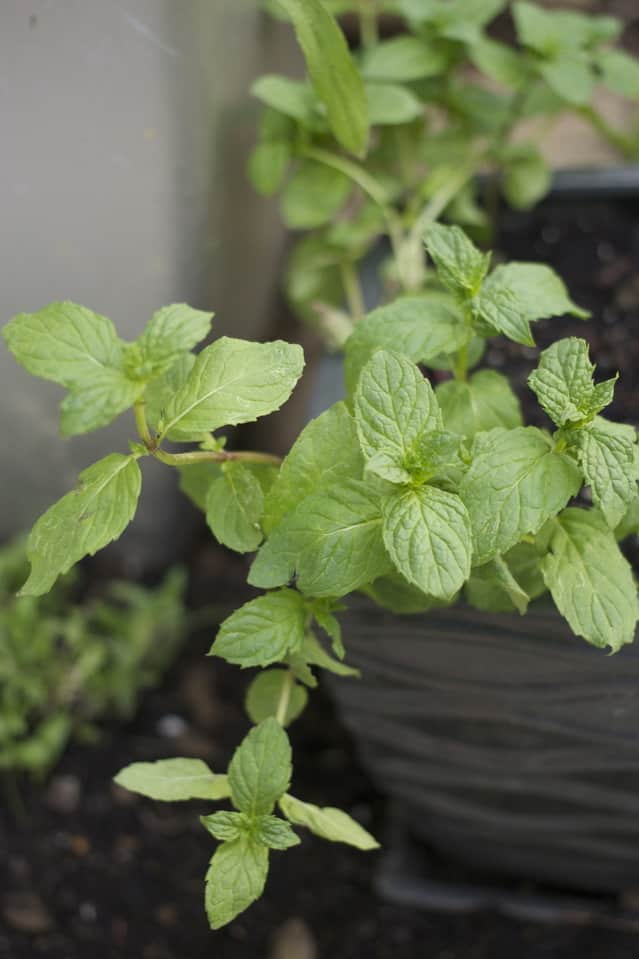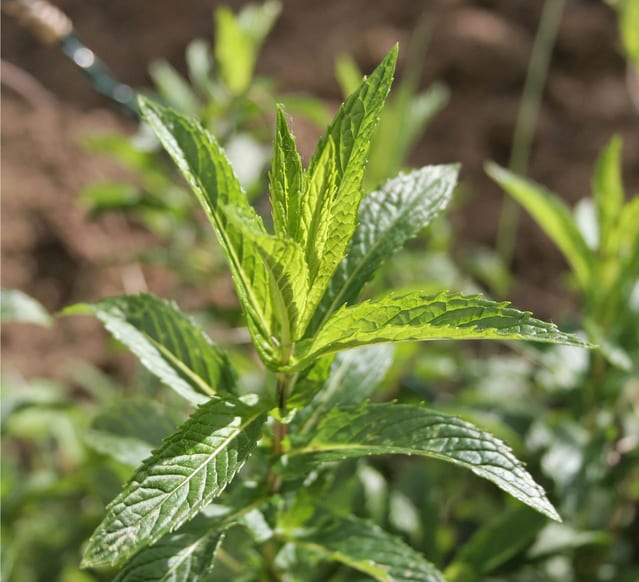If curling up with a tasty cup of homemade mint tea on a crisp fall day sounds enticing, then plant some mint. This easy-to-grow herb has been used for thousands of years as a flavoring and remedy for various ailments, including stomach aches and poor digestion.
In addition to creating hot mint tea, you can use this versatile herb as a flavoring in iced tea and lemonade, as well as in fruit salad. Use mint tea to flavor desserts, such as icing, cake and cupcakes.
Legend has it that mint (Mentha) came from the nymph Menthe, the daughter of the river god, Cocyte. Pluto found Menthe enchanting, but his wife, Prosperpine, became jealous and changed Menthe into a mint plant.
More than 600 varieties of mint exist, including mint used for groundcover, rather than for consuming. You’ll find the standard spearmint and peppermint, as well as chocolate and apple mint and bergamot, a peppermint that has a slight orange flavor. Pennyroyal is a strong smelling mint used to ward of pests in the garden, like fleas.
Mint grows year-round in mild climates and will grow throughout the fall in most areas. It is perennial in zones 3-11. The plant goes dormant after frost and comes back in spring. Mint also thrives in spring and summer, although it will die back in areas where summers are hot and dry. If you live in an area with cold winters, you can also successfully grow mint indoors.
 (meltingdog/FreeImages.com)
(meltingdog/FreeImages.com)
To have success growing mint, keep the following cultivation tips in mind.
Locate mint in a full-sun to part shade location. In areas with hot afternoon sun, plant mint in an area that receives shade in the latter part of the day.
Plant mint in nutrient-rich soil that stays moist. To encourage the soil to retain moisture, add a generous amount of homemade or bagged compost to the soil prior to planting.
Containerize mint if you are concerned about the herb taking over your garden. Mint can be aggressive, since it grows by underground stems. Generally, this is only a problem in areas of the country with abundant rainfall, or if you will be planting in an area of the yard that gets irrigated regularly. The plant dies back in dry soil. In containers, plant mint in a high-quality potting soil that retains moisture.
Water mint regularly. Mint will die back if not given sufficient water. Plant mint in areas of the garden that remain moist, such as by downspouts. Also keep in mind that pots dry out much more quickly than the ground, especially when the weather is warm. Water containerized mint as soon as the soil surface dries out..

(Cara James/FreeImages.com)
Fertilize mint at planting time with a well-balanced, organic fertilizer. If you will be growing mint year-round, fertilize every two months.
Harvest mint often. Regular pruning will cause the plant to grow bushy and strong. Pinch back any flowers that appear, as they can make the leaves taste bitter. For the best tasting mint, harvest at midday.
Store mint with the stems in water and use within a week. If you wish to keep mint longer, freeze the leaves in ice cubes or dry them.
Julie Bawden-Davis is a garden writer and master gardener, who since 1985 has written for publications such as Organic Gardening, Wildflower, Better Homes and Gardens and The Los Angeles Times. She is the author of seven books, including Reader’s Digest Flower Gardening, Fairy Gardening, The Strawberry Story, and Indoor Gardening the Organic Way, and is the founder of HealthyHouseplants.com.

